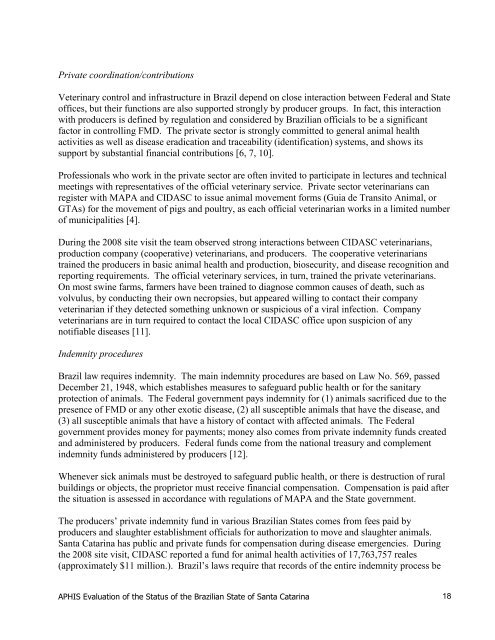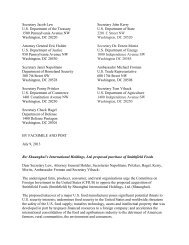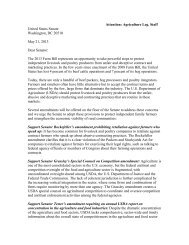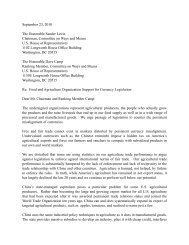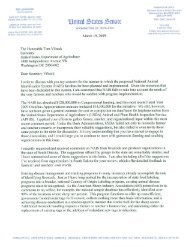Exhibit 8, 100416 Brazil FMD Risk Evaluation - R-Calf
Exhibit 8, 100416 Brazil FMD Risk Evaluation - R-Calf
Exhibit 8, 100416 Brazil FMD Risk Evaluation - R-Calf
Create successful ePaper yourself
Turn your PDF publications into a flip-book with our unique Google optimized e-Paper software.
Private coordination/contributions<br />
Veterinary control and infrastructure in <strong>Brazil</strong> depend on close interaction between Federal and State<br />
offices, but their functions are also supported strongly by producer groups. In fact, this interaction<br />
with producers is defined by regulation and considered by <strong>Brazil</strong>ian officials to be a significant<br />
factor in controlling <strong>FMD</strong>. The private sector is strongly committed to general animal health<br />
activities as well as disease eradication and traceability (identification) systems, and shows its<br />
support by substantial financial contributions [6, 7, 10].<br />
Professionals who work in the private sector are often invited to participate in lectures and technical<br />
meetings with representatives of the official veterinary service. Private sector veterinarians can<br />
register with MAPA and CIDASC to issue animal movement forms (Guia de Transito Animal, or<br />
GTAs) for the movement of pigs and poultry, as each official veterinarian works in a limited number<br />
of municipalities [4].<br />
During the 2008 site visit the team observed strong interactions between CIDASC veterinarians,<br />
production company (cooperative) veterinarians, and producers. The cooperative veterinarians<br />
trained the producers in basic animal health and production, biosecurity, and disease recognition and<br />
reporting requirements. The official veterinary services, in turn, trained the private veterinarians.<br />
On most swine farms, farmers have been trained to diagnose common causes of death, such as<br />
volvulus, by conducting their own necropsies, but appeared willing to contact their company<br />
veterinarian if they detected something unknown or suspicious of a viral infection. Company<br />
veterinarians are in turn required to contact the local CIDASC office upon suspicion of any<br />
notifiable diseases [11].<br />
Indemnity procedures<br />
<strong>Brazil</strong> law requires indemnity. The main indemnity procedures are based on Law No. 569, passed<br />
December 21, 1948, which establishes measures to safeguard public health or for the sanitary<br />
protection of animals. The Federal government pays indemnity for (1) animals sacrificed due to the<br />
presence of <strong>FMD</strong> or any other exotic disease, (2) all susceptible animals that have the disease, and<br />
(3) all susceptible animals that have a history of contact with affected animals. The Federal<br />
government provides money for payments; money also comes from private indemnity funds created<br />
and administered by producers. Federal funds come from the national treasury and complement<br />
indemnity funds administered by producers [12].<br />
Whenever sick animals must be destroyed to safeguard public health, or there is destruction of rural<br />
buildings or objects, the proprietor must receive financial compensation. Compensation is paid after<br />
the situation is assessed in accordance with regulations of MAPA and the State government.<br />
The producers’ private indemnity fund in various <strong>Brazil</strong>ian States comes from fees paid by<br />
producers and slaughter establishment officials for authorization to move and slaughter animals.<br />
Santa Catarina has public and private funds for compensation during disease emergencies. During<br />
the 2008 site visit, CIDASC reported a fund for animal health activities of 17,763,757 reales<br />
(approximately $11 million.). <strong>Brazil</strong>’s laws require that records of the entire indemnity process be<br />
APHIS <strong>Evaluation</strong> of the Status of the <strong>Brazil</strong>ian State of Santa Catarina 18


